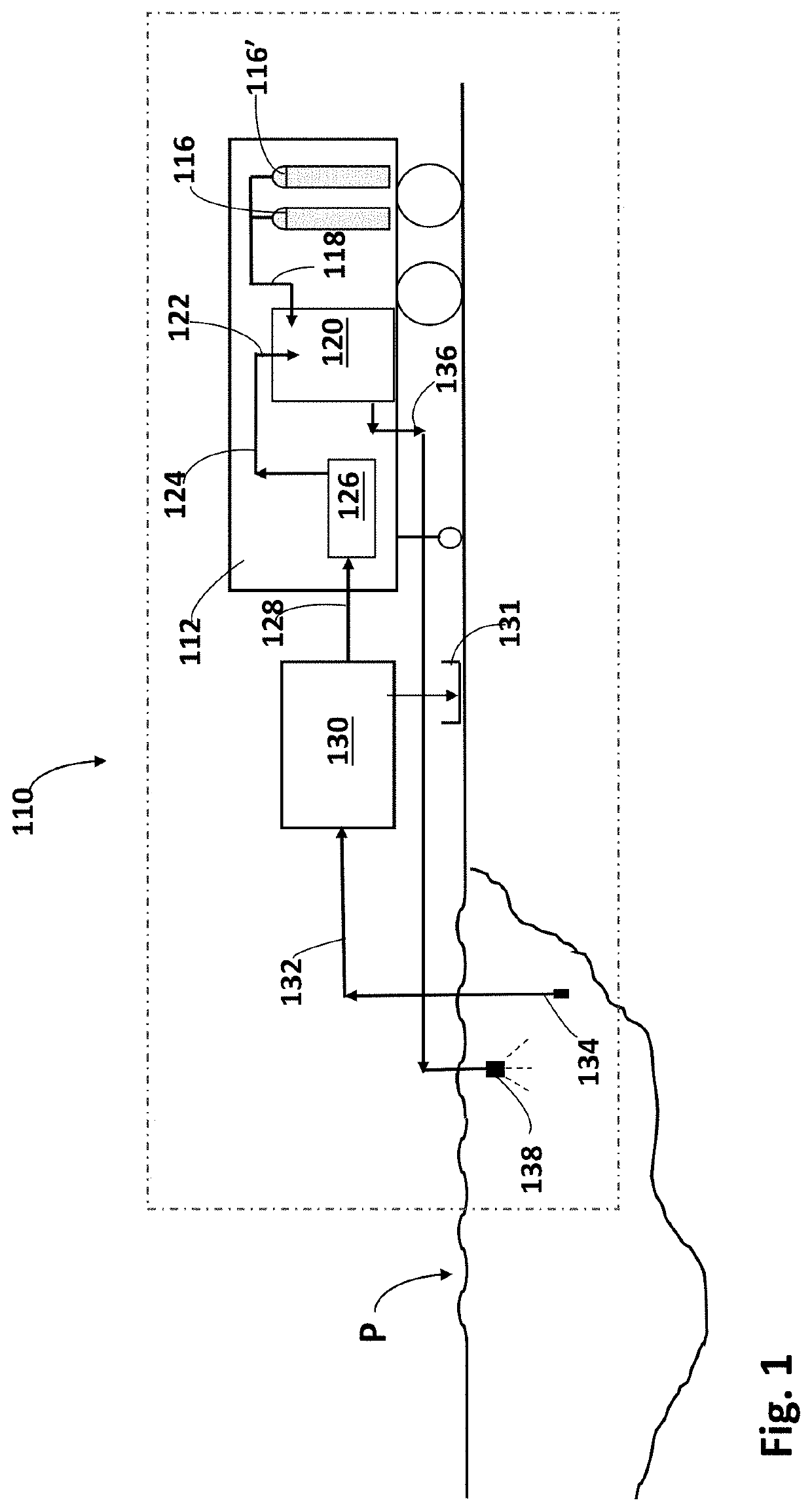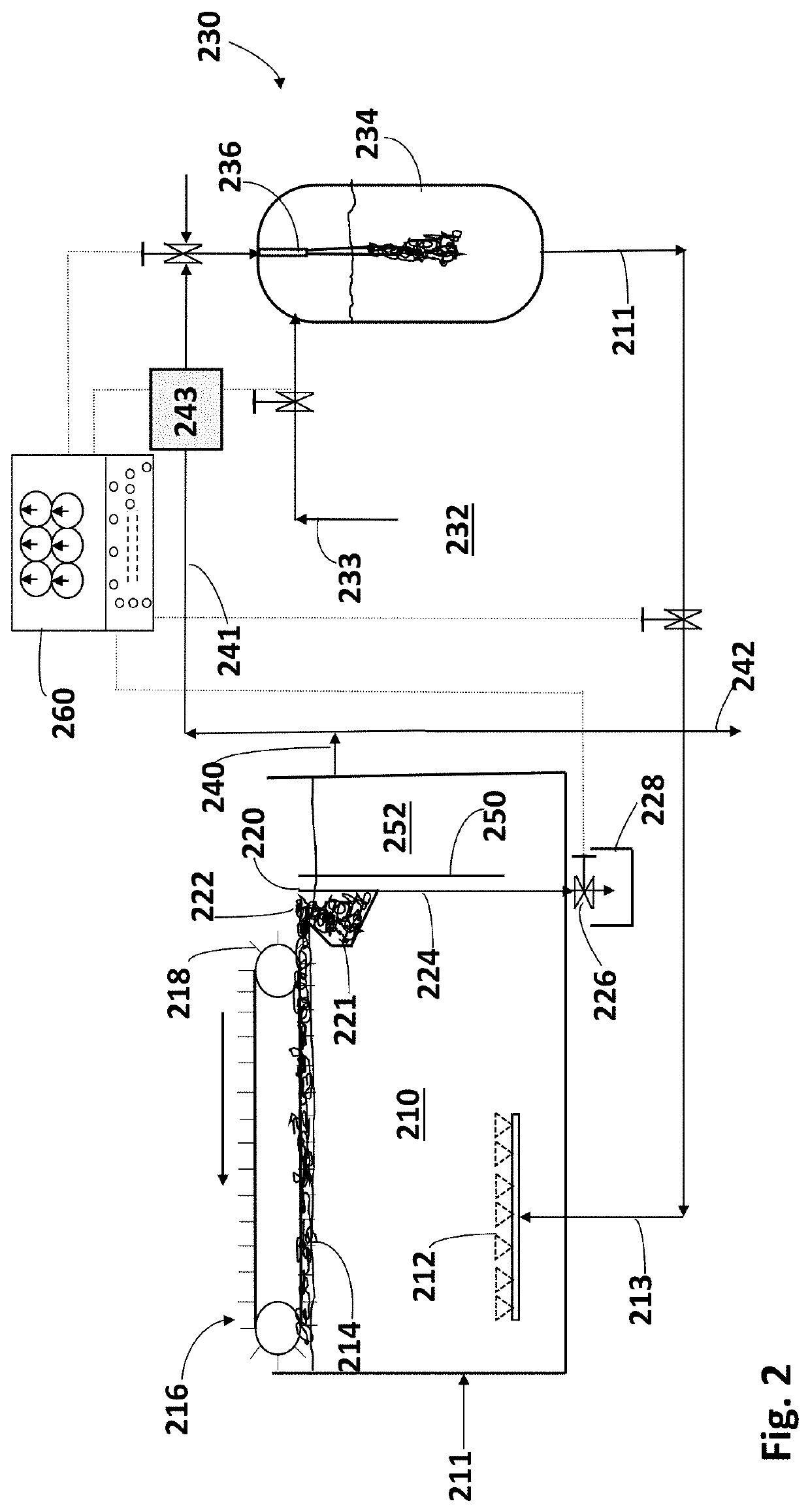Gas Saturation of Liquids with Application to Dissolved Gas Flotation and Supplying Dissolved Gases to Downstream Processes and Water Treatment
a technology of dissolved gas and liquid, applied in water/sewage treatment, specific water treatment objectives, transportation and packaging, etc., can solve the problems of inefficiency in gas transfer, and large amount of gas bubbles in the plunger, so as to reduce the water weight of the vessel
- Summary
- Abstract
- Description
- Claims
- Application Information
AI Technical Summary
Benefits of technology
Problems solved by technology
Method used
Image
Examples
example 1
[0074]In a first example of results, a ⅜″ converging water nozzle was mounted in a pressure vessel of approximately 50 inches in total height. The vessel was operated using water as the liquid and oxygen as the dissolving gas. Table 1 shows recorded data and Table 2 shows corresponding calculated performance data including Infusion Efficiency and Specific Power Use. The intermediate calculation of the kH factor is known in the art of applying Henry's Law to a given set of conditions.
TABLE 1Primary Recorded Data for Example 1Liq. FlowO2 FlowPump OutletMeterMeterInlet TTank Digital % Levelpsigpmlb / hr° C.Pressure psiTankGauge21.0710.93102985032219.039.9103025032016.678.71103055032013.357103055031511.125.561030250307
TABLE 2Calculated Data for Example 1kH for Henry's LawHenry's LawInfusionNozzleSpecific Power UseO2 Calculatedat Avg Tmg / LEfficiencyDPWater HPHP permg per L of Watergram / L-psikH at Avg T(kH at Temp)psiHPlb / hr O21036.110.0037014471134.2792591.34481243.9560.361941039.070.00370...
example 2
[0075]An example of the non-obvious optimization of the plunging jet saturator for minimum specific power use while simultaneously maximizing dissolved gas delivery, the same system was tested with four water nozzles of various diameters at nominally 250 psi tank operating pressure. Results, shown in Table 3, demonstrate that the ⅜″ nozzle and the ½″ nozzle have nearly identical specific power use for the tested conditions. The ¾″ nozzle, while having a low pressure drop, produced a lower infusion efficiency percentage and the lowest volumetric mass transfer coefficient, kLa. The smallest nozzle, while producing the highest infusion efficiency, produced an unacceptable specific power use because of the pressure drop across the nozzle. In these results, the volumetric mass transfer coefficient, kLa, is calculated by knowing the working tank water volume and throughput to calculate a residence time in the vessel and then employing the infusion efficiency calculation demonstrated above...
example 3
[0078]The indication of an undesirable shift from dissolved gas content to undissolved gas content in the saturator effluent with changing operational conditions is illustrated in the data in Table 4. For this example, a reduction in the quiescent zone length was achieved by dropping the water level (%) in the vessel until bubbles began to encroach on outlet line 32. This demonstrated the importance of establishing a clear quiescent zone length below the turbulent plunge zone. In the data shown, water and oxygen flow are remarkably steady between 47% to 50% tank level. Beyond this point, at lower tank levels and therefore reduced length of quiescent zone, the water flow begins to drop as undissolved oxygen gas displaces the water rather than becomes dissolved in the water. The crossover of the water flow decreasing and the gas flow increasing for a given tank pressure operating condition is a clear indication of an unwanted increase in undissolved gas content in the effluent of the ...
PUM
| Property | Measurement | Unit |
|---|---|---|
| pressure | aaaaa | aaaaa |
| velocity | aaaaa | aaaaa |
| angle | aaaaa | aaaaa |
Abstract
Description
Claims
Application Information
 Login to View More
Login to View More - R&D
- Intellectual Property
- Life Sciences
- Materials
- Tech Scout
- Unparalleled Data Quality
- Higher Quality Content
- 60% Fewer Hallucinations
Browse by: Latest US Patents, China's latest patents, Technical Efficacy Thesaurus, Application Domain, Technology Topic, Popular Technical Reports.
© 2025 PatSnap. All rights reserved.Legal|Privacy policy|Modern Slavery Act Transparency Statement|Sitemap|About US| Contact US: help@patsnap.com



